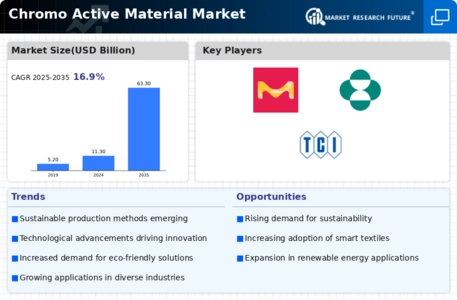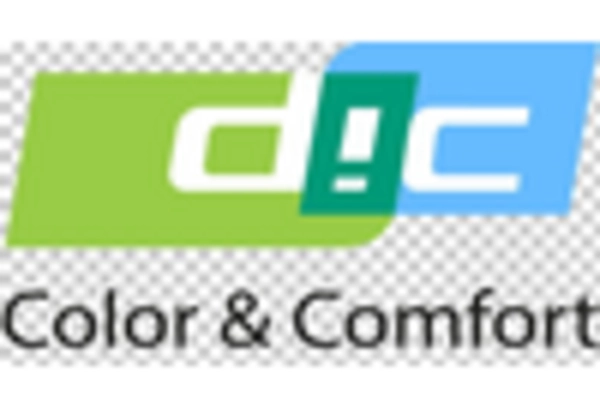Market Growth Projections
The Global Chromo Active Material Market Industry is poised for substantial growth, with projections indicating a market size of 11.3 USD Billion in 2024 and an anticipated increase to 63.3 USD Billion by 2035. This growth trajectory suggests a compound annual growth rate of 16.91% from 2025 to 2035, highlighting the increasing relevance of chromo active materials in various applications. The market's expansion is likely to be fueled by technological advancements, rising consumer demand for innovative products, and the ongoing exploration of new applications across diverse sectors.
Growing Environmental Awareness
Growing environmental awareness among consumers is influencing the Global Chromo Active Material Market Industry. As sustainability becomes a priority, there is an increasing demand for eco-friendly chromo active materials that minimize environmental impact. Manufacturers are responding by developing biodegradable and non-toxic alternatives, which appeal to environmentally conscious consumers. This shift not only aligns with global sustainability goals but also opens new market opportunities. The emphasis on sustainable practices is likely to drive growth in the sector, as consumers increasingly seek products that reflect their values and contribute to a healthier planet.
Rising Demand for Smart Textiles
The Global Chromo Active Material Market Industry is experiencing a surge in demand for smart textiles, which integrate chromo active materials to enable color-changing properties. This trend is particularly evident in the fashion and sportswear sectors, where consumers seek innovative and functional clothing. As the market evolves, it is projected to reach 11.3 USD Billion in 2024, driven by advancements in textile technology and increasing consumer awareness. The integration of these materials into everyday apparel not only enhances aesthetic appeal but also offers potential applications in health monitoring and environmental responsiveness, thereby expanding the market's reach.
Diverse Applications Across Industries
The diverse applications of chromo active materials across various industries are significantly contributing to the growth of the Global Chromo Active Material Market Industry. These materials are utilized in sectors such as automotive, packaging, and consumer electronics, where their unique properties enhance product functionality and appeal. For example, in the automotive industry, chromo active materials are employed in temperature-sensitive coatings that change color based on heat exposure. This versatility not only broadens the market's scope but also encourages cross-industry collaboration, further driving innovation and market expansion.
Technological Advancements in Material Science
Technological advancements in material science are propelling the Global Chromo Active Material Market Industry forward. Innovations in polymer chemistry and nanotechnology have led to the development of more efficient and responsive chromo active materials. These advancements enable manufacturers to create products with enhanced durability and performance characteristics. For instance, the introduction of thermochromic and photochromic materials has opened new avenues for applications in automotive and consumer electronics. As a result, the market is expected to witness a compound annual growth rate of 16.91% from 2025 to 2035, reflecting the growing interest in high-performance materials.
Increased Investment in Research and Development
Increased investment in research and development is a key driver for the Global Chromo Active Material Market Industry. Governments and private entities are recognizing the potential of chromo active materials in various applications, leading to enhanced funding for innovative projects. This financial support facilitates the exploration of new applications, such as in healthcare, where chromo active materials can be utilized for drug delivery systems or diagnostic tools. The anticipated growth in the market, projected to reach 63.3 USD Billion by 2035, underscores the importance of R&D in fostering innovation and expanding the commercial viability of these materials.

















Leave a Comment